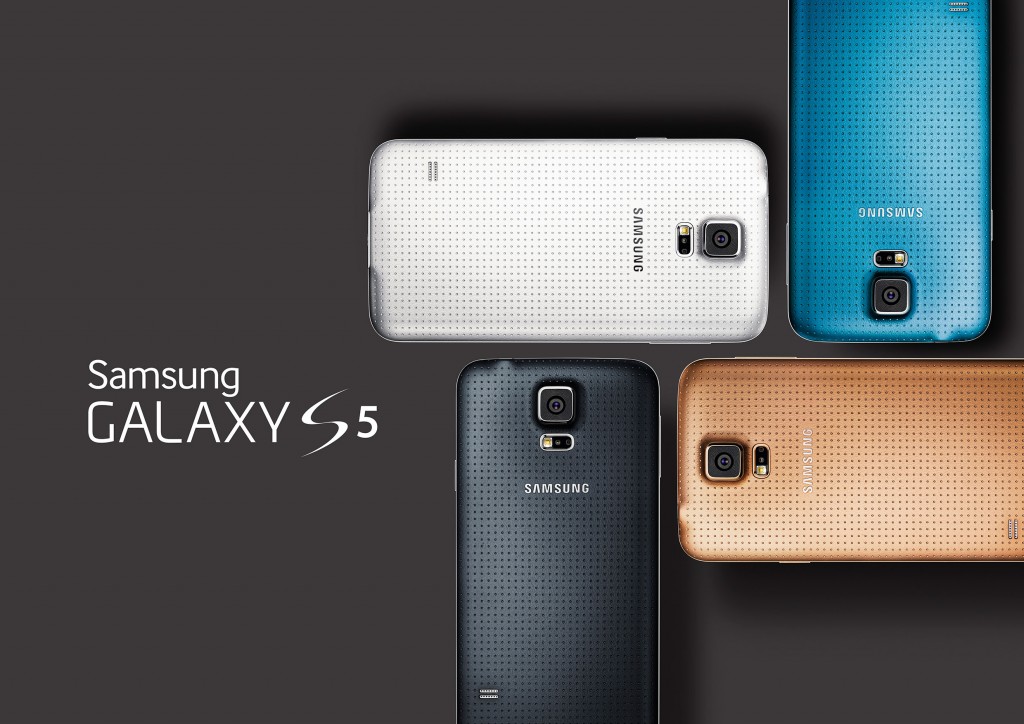
Samsung versus iPhone. That’s typically all you hear in the world of consumer technology, particularly in marketing. On Monday at Mobile World Congress in Barcelona, Samsung announced their new flagship smartphone, the Galaxy S5. From what I’ve read, the reactions have been tempered because there is nothing particularly breakthrough on the device. This is something that Apple and all hardware makers will face going forward: they’ve reached a theoretical terminal velocity with what they can do with hardware, at certain price points, based on the technology that’s available.
To start, there’s no sense in hiding it: I’m a huge Apple fan and have been since I was a kid. I grew up on Macs. It fascinates me how a brand can cause the world to essentially stop when they make an announcement. That’s something that cannot be bought; it’s earned by creating the best products and marketing in the world. However, I’m an even bigger fan of competition and, undoubtedly, Android and Samsung have forced Apple to improve, and vice versa. And that’s helping push technology to the limits of what’s possible, benefiting everyone.
The Galaxy S5 is a great piece of hardware from what I’ve read and seen. It has a super-fast chip, a big, crystal clear 5.1″ AMOLED displayand some new features that both play catchup – fingerprint scanner – and attempt to compete in a field that hasn’t fully developed: health and fitness tracking.
From what I’ve read, the fingerprint scanner was a rushed feature to compete against Apple’s Touch ID on its iPhone 5s. On the GS5, the user needs to press the home button then swipe their finger down across the home button to activate it. This is not ideal. Technology is at its best when it disappears from the user and they don’t need to think about it. Press and lift on Apple’s iPhone 5s and your device is unlocked. It works great about 90% of the time – I don’t even notice it’s there and that’s one of the things Apple works so hard to achieve with their technology, and it shows. On the Galaxy S5, the mere fact that a press and then a swipe is involved, the technology is front and center, not in the background. What I do like about Samsung’s implementation of the fingerprint scanner, however, is how users can use it to store certain data securely, as well as use it for mobile payments with PayPal. That information has yet to be fully disclosed, although there has been an SDK kit provided to developers. I expect Apple to challenge them on mobile payments and Samsung wanted to try and gain a foothold.
One last comment on their fingerprint scanner: barely a stink has been raised about its security. Is it in included in Google’s automatic backups? Can it be restored? Are fingerprint images stored, or is it just the data, like Apple? I raise this question because when Apple announced that iPhone 5s would include Touch ID, the press raised every concern possible about security. It’s interesting how the press has turned against their once darling Apple, in my view.
Outside of new software features and some nifty camera enhancements, the last biggest feature is a heart rate monitor. On the back of the GS5, looking like a camera flash, is the monitor. Here are some details from Value Walk:
This sensor is integrated in the back of the smartphone, and it detects your blood flow beneath the skin. You’ll have to place your finger on this sensor for it to detect your heart’s beat per minute (BPM).
To use this feature, you’ll need to launch the S Heath app (which debuted with the Galaxy S4, but has evolved with Galaxy S5). Now turn your phone back and then place your finger on the center of the flash module. Tap on the Start button from the app.
Now you need to hold your finger in the same place for a few seconds, while holding still, and without talking. The app clearly states to “Do not move or talk” when measuring your heart rate. You’ll now be able to see the result in a few seconds.
How well this works is yet to be determined. Clearly, Samsung sees the internet of things being the next space of opportunity and is trying to get a head start. Samsung’s strategy of throwing literally everything at the wall and seeing what sticks has the benefit of finding products that have a higher success rate, but it also shows how they are a follower, not a leader. Look no further than the Galaxy Gear watch. It was an abomination that was rushed to market, for which I believe was created based on rumors that Apple was working on an iWatch. They appear to have improved the Gear 2 and Gear Fit, eliminating the “Galaxy” nomenclature from the brand, likely because they need to keep that name for their flagship device.
Samsung will spend billions of dollars on marketing on the GS5 and will sell millions of them. It will be the top selling Android device and will give Apple a run for its money, temporarily. However, Samsung faces reality with the GS5: analyst expectations are unrealistic, and when they’re unsurprisingly not met, your device gets labeled as an incremental update. In this case, however, as in the iPhone 5s, incremental updates aren’t necessarily a bad thing.
